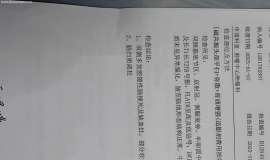ж‘ҳиҰҒпјҡиҝҷ3еҗҚжӮЈиҖ…еңЁеҸ–еҫ—зЁіе®ҡзҡ„еҲҶеӯҗеӯҰзј“и§Јд№ӢеҗҺпјҲиһҚеҗҲеҹәеӣ иҪ¬йҳҙPCRUпјүеҒңз”ЁиҫҫжІҷжӣҝе°јгҖӮ1еҗҚжӮЈиҖ…еӨҚеҸ‘пјҢеҸҰеӨ–дёӨеҗҚжӮЈиҖ…еңЁ1е№ҙеҗҺд»ҚдҝқжҢҒдәҶPCRUгҖӮд»ҘеүҚиҜҙиҝҮпјҢиҫҫжІҷжӣҝе°јзЎ®е®һеҸҜд»ҘжҸҗй«ҳе…Қз–«еҠӣпјҢеёҢжңӣд»ҠеҗҺиғҪиҺ·еҫ—жӣҙеӨҡзҡ„зӣёе…із ”究жҠҘе‘ҠгҖӮ
1 D8 \2 o8 x% Z6 i! J е…ідәҺиҝҷдёӘз ”з©¶еҖјеҫ—жіЁж„Ҹзҡ„жҳҜпјҢиҝҷдёүеҗҚжӮЈиҖ…йғҪжҳҜжңҚз”Ёж јеҲ—еҚ«еӨұиҙҘеҗҺиҪ¬з”ЁиҫҫжІҷжӣҝе°јзҡ„пјҢд№ҹеҚід»–们еҜ№ж јеҲ—еҚ«жҳҜиҖҗиҚҜзҡ„гҖӮиҝҷдёҺжі•еӣҪзҡ„ж јеҲ—еҚ«еҒңиҚҜз ”з©¶еҸҲжңүжүҖдёҚеҗҢпјҢйӮЈдёӘз ”з©¶дёӯзҡ„жӮЈиҖ…йғҪжҳҜеҜ№ж јеҲ—еҚ«еҸҚеә”иүҜеҘҪзҡ„гҖӮеёҢжңӣеҢ»з”ҹ们иғҪжү©еӨ§з ”究й•ҝжңҹи§ӮеҜҹпјҢзңӢзңӢеҒңз”ЁиҫҫжІҷжӣҝе°јжҳҜеҗҰиғҪжҢҒд№…дёҚеӨҚеҸ‘гҖӮ
. v v9 W3 _8 f* s; ]0 k ' G+ b$ {. v% H) C
дҪңиҖ…пјҡжқҘиҮӘжҫіеӨ§еҲ©дәҡ2 x& o7 E7 l M% s& J, @
жқҘжәҗпјҡHaematologica. 2011.8.9.
& ~( ~ p6 w# C9 I2 s0 L5 SDear Group,- C- G) v" r& i: m& V- p
5 }2 `* K- p5 o" ~& d+ N! P# f
Some of you are on Dasatinib (Sprycel) and we wish to give news on all CML
% }) U# l9 }0 e4 [0 U! }# x$ Jtherapies. Here is a report from Australia on 3 patients who went off Sprycel
2 H z. S5 u1 q: O2 G# U, eafter stable molecular response (PCRU). 1 patient relapsed but 2/3 patients
! c" A$ l5 I+ V6 E4 e& @remain in stable PCRU at the 1 year mark. Some of you may remember that Sprycel
$ }, v) m7 v2 M K2 ?3 Q( y' [does spike up the immune system so I hope more reports come out on this issue.
4 J# M" C* ?0 \) C; O% \' ^2 R( @% t/ y; z( T
The remarkable news about Sprycel cessation is that all 3 patients had failed
/ u$ I$ R" @. @- T/ IGleevec and Sprycel was their second TKI so they had resistant disease. This is
9 \! F" t" n8 D0 L* Z4 ?/ ^4 \different from the stopping Gleevec trial in France which only targets patients
9 \7 }" d: {) W+ n# \0 Dwho have done well on Gleevec.
* b! X# ]% |+ s0 w9 q$ A( s: r8 L: h/ Y9 H
Hopefully, the doctors will report on a larger study and long-term to see if the
; b; p1 J+ {: _5 `response off Sprycel is sustained.
8 ^. j- ?; B6 w, H5 y. P% k5 m ]# d( L' L5 K+ o
Best Wishes,. k. c& Z/ }5 I. G/ ?
Anjana* U% P6 x+ Y' [7 E" h* H$ q5 `
4 t* B. o4 O3 {' K3 C3 K7 i5 e4 N% d/ i0 D
$ O% v2 P7 E) w% d
Haematologica. 2011 Aug 9. [Epub ahead of print]( f" B# c' p3 P- o
Durable complete molecular remission of chronic myeloid leukemia following
) t6 y* [8 a+ |+ H- }! {dasatinib cessation, despite adverse disease features.
& |2 U P' u# \Ross DM, Bartley PA, Goyne J, Morley AA, Seymour JF, Grigg AP.
4 T1 L& O7 [3 tSource3 N7 g; A1 L) w# p
Adelaide, Australia;% t! c7 T1 M3 x
, T- Y. f1 Z% R3 y9 z. w k$ X
Abstract
+ `& Q5 @6 k% T6 ], iPatients with chronic myeloid leukemia, treated with imatinib, who have a6 a/ j% E. }" z) G
durable complete molecular response might remain in CMR after stopping
8 X$ _/ o+ E2 C+ ftreatment. Previous reports of patients stopping treatment in complete molecular/ v$ C; c6 _' o) @ I
response have included only patients with a good response to imatinib. We w: _/ t# U. u/ t, t! I6 K+ R
describe three patients with stable complete molecular response on dasatinib9 w% a! I& p* |: \/ b% z0 ^
treatment following imatinib failure. Two of the three patients remain in- E! v Q( e A
complete molecular response more than 12 months after stopping dasatinib. In! D7 A0 O9 b W: J' T
these two patients we used highly sensitive patient-specific BCR-ABL1 DNA PCR to+ F7 F) f3 U, B+ L7 \
show that the leukemic clone remains detectable, as we have previously shown in
1 R' ^# r' P" j. Rimatinib-treated patients. Dasatinib-associated immunological phenomena, such as- T; ]# y! [3 E. J0 p
the emergence of clonal T cell populations, were observed both in one patient
5 F' T7 K& Y% b1 bwho relapsed and in one patient in remission. Our results suggest that the% X4 [2 q& d: j, y4 q- g+ S
characteristics of complete molecular response on dasatinib treatment may be! n3 ]1 V- o# H+ i
similar to that achieved with imatinib, at least in patients with adverse
3 [# P* {, w! M6 M, H' d! ]disease features.; x# Q h" T: a* H! k
|


